Today’s Current Affairs: 24th March 2023 for UPSC IAS exams, State PSC exams, SSC CGL, State SSC, RRB, Railways, Banking Exam & IBPS, etc
Table of Contents
Green Tug Transition Programme:

The Union Minister of Ports, Shipping & Waterways in India has announced the launch of the Green Tug Transition Programme (GTTP) with the aim of making India a global hub for green shipbuilding by 2030.
- The programme will start with Green Hybrid Tugs, which will be powered by green hybrid propulsion systems, and will subsequently adopt non-fossil fuel solutions like Methanol, Ammonia, and Hydrogen.
- Green shipping refers to the use of environment-friendly resources and energy to transport people and goods by ship
- Green ship technology adopts procedures to decrease emissions, consume less energy, and be more efficient.
- Tugs are special boats that assist other vessels into and out of port.
- The primary purpose of these boats is to help move larger ships by towing, pushing, and guiding.
Carbon Border Adjustment Mechanism:

European Union is willing to collaborate with India in easing the administrative burden for businesses while enforcing its Carbon Border Adjustment Mechanism (CBAM).
- CBAM or Carbon Tax is a tax that imposes importers and non-EU manufacturers to pay for the carbon emission linked to the goods they sell within EU limits.
- Under the political agreement, the CBAM will enter into force in its transitional phase as of 1 October 2023
- It seeks to impose tariffs on imports with a high carbon footprint entering the 27-member bloc.
- Encourage cleaner industrial production in non-EU countries
- India is considering imposing retaliatory tariffs on EU imports in response to CBAM, which India said is discriminatory towards developing nations.
Sharda Peeth:
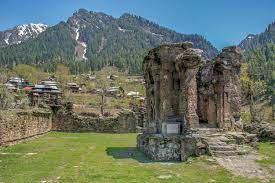
Home Minister e-inaugurated Mata Sharda Devi Temple dedicated to Goddess Sharda Devi and announced that the government of India will attempt to build a Kartrapur-style corridor to Sharda Peeth as an important step in the direction of discovery of Sharda-civilization and promotion of Sharda-script.
- Union Home Minister said that the government will move forward to open Sharda Peeth on the lines of the Kartarpur corridor.
- Sharda Peeth is an abandoned Hindu temple and ancient centre of learning.
- It is located in the village of Sharda in the valley of Mount Harmukh, along the Neelam River in the Pakistani-administered territory of Azad Kashmir. It lies 16 miles to the northwest of the Line of Control.
- As a Centre of Learning: Between the 6th and 12th centuries CE, it was one of the foremost centres of higher learning, hosting scholars such as Kalhana, Adi Shankara, and Vairotsana.
- It is also said to be where Paṇini and Hemachandra completed and stored their writings on Sanskrit grammar.
- Religious significance: Sharda is the most revered religious place for Kashmiri Pandits. They believe that Sharada in Kashmir is a tripartite embodiment of the goddess Shakti: Sharada (goddess of learning), Saraswati (goddess of knowledge), and Vagdevi (goddess of speech).
- It is one of the 18 Maha Shakti Peethas throughout South Asia that commemorate the location of fallen body parts of the Hindu deity Sati.
World Meteorological Day 2023:

World Meteorological Day takes place every year on 23 March
- It is in force from 23 March 1950 of the Convention establishing the World Meteorological Organization.
- It showcases the essential contribution of National Meteorological and Hydrological Services to the safety and wellbeing of society and is celebrated with activities around the world.
- The theme for World Meteorological Day 2023 is “The future of weather, climate, and water across generations.”
- The theme chosen for World Meteorological Day reflect topical weather, climate or water-related issues.
- The day highlights “the essential role that ‘National Meteorological and Hydrological Services’ (NMHS) plays in the safety and wellbeing of the society,” the day is also observed to make people aware of their role in protecting Earth’s atmosphere.
Shaheed Diwas:
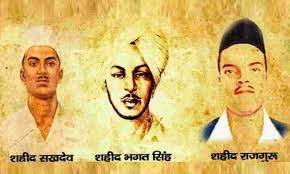
Shaheed Diwas or Martyr’s Day is celebrated across India on March 23
- It is celebrated to remember the sacrifices made by three freedom fighters – Bhagat Singh, Sukhdev Thapar, and Shivaram Rajguru – who died while leading India’s fight for freedom from British rule.
- The three freedom fighters were hanged by the British Government in 1931.
- The trio was found guilty of the murder of deputy police superintendent JP Saunders in 1928, to avenge the death of Lala Lajpat Rai.
- Bhagat Singh was 23, Rajguru was 22 and Sukhdev was 23 when they were hanged to death at Lahore Central Jail.
World Happiness Report 2023: India Rank

For Sixth time Finland has been crowned as the happiest nation, Denmark is at number two, followed by Iceland at number three.
- Unlike previous years, where the same countries tend to appear in the top 20, there’s a new entrant this year — Lithuania (at the 20th spot).
- Afghanistan was ranked as the unhappiest nation, followed by Lebanon, Sierra Leone, Zimbabwe, respectively.
- India ranks at 125th position out of 136 countries, making it one of the least happy countries in the world.
- In 2022, India ranked 136th position out of 146 countries.
- It even lags behind its neighbouring nations like Nepal, China, Bangladesh and Sri Lanka.
- The UN Sustainable Development Solutions Network released the World Happiness Report 2023 which ranks countries on happiness.
- In 2012, the UN SDSN was launched under the auspices of the UN Secretary-General.
- SDSN promotes integrated approaches to implement the Sustainable Development Goals (SDGs) and the Paris Agreement on Climate Change, through education, research, policy analysis, and global cooperation.
Bharat 6G Project:
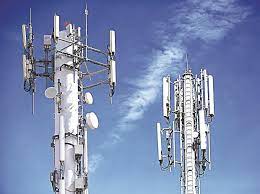
The Prime Minister has unveiled a Vision Document to roll out high-speed 6G Communication Services by 2030 and also launched Bharat 6G Project to identify and fund research and deployment of the next-generation technology in India.
- The Government has also launched the ‘Call Before You Dig (CBuD)’ app to facilitate coordination between excavation agencies and underground utility owners to prevent damage to utilities due to digging
- Bharat 6G Project will be implemented in two phases, the first one from 2023 to 2025 and the second one from 2025 to 2030.
- The government has also appointed an apex council to oversee the project and focus on issues such as standardization, identification of the spectrum for 6G usage, create an ecosystem for devices and systems, and figure out finances for research and development, among other things.
- A key focus of the council will be on new technologies such as Terahertz communication, radio interfaces, tactile internet, artificial intelligence for connected intelligence, new encoding methods and waveforms chipsets for 6G devices.
- In phase one, support will be provided to explorative ideas, risky pathways and proof-of-concept tests.
- Ideas and concepts that show promise and potential for acceptance by the global peer community will be adequately supported to develop them to completion, establish their use cases and benefits, and create implementational IPs and testbeds leading to commercialisation as part of phase two.
- It aims to enable India to become a leading global supplier of intellectual property, products and solutions of affordable 6G telecom solutions and identify priority areas for 6G research based on India’s competitive advantages.
6G Technology:
- 6G (Sixth-Generation Wireless) is the successor to 5G cellular technology.
- It will be able to use higher frequencies than 5G networks and provide substantially higher capacity and much lower latency (delay).
- One of the goals of 6G internet will be to support one microsecond-latency communication (delay of one-microsecond in communication).
- This is 1,000 times faster – or 1/1000th the latency – than one millisecond throughput.
Exostoma Dhritiae : New Catfish Species
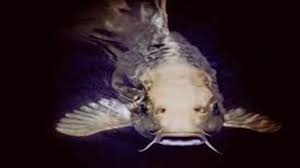
A new catfish species named ‘Exostoma Dhritiae’ was recently discovered by scientists of the Zoological Survey of India (ZSI) in Arunachal Pradesh.
- Exostoma Dhritiae is a new species of catfish of the genus Exostoma.
- It is a small fish locally called ‘Ngorang’ by local tribals.
- The new species has been named ‘Exostoma Dhritiae’ after Dhriti Banerjee, the first woman director of the ZSI.
- It was found in Siking stream, a tributary of the Siang River in the Upper Siang district of Arunachal Pradesh.
- Catfish represent one of the largest groups of freshwater fishes, with more than 2000 species.
- Most catfish are found in freshwater but a few are marine.
- Most species of catfish are nocturnal.
- Catfish are primarily benthic or bottom-dwellers.
Waste-To-Energy Project : Kerala
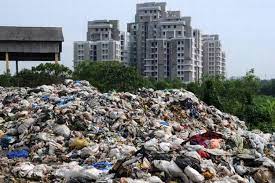
The Kerala government recently announced the State’s first Waste-To-Energy project in Kozhikode. The planned facility is expected to be built in two years and generate about 6 MW of power.
- Waste-to-energy projects use non-recyclable dry waste to generate electricity and ease the Solid Waste Management (SWM) burden.
- This fraction of the non-recyclable dry waste is the most challenging portion of the present SWM system; the presence of these materials also reduces the efficiency of recycling other dry and wet waste.
- Waste-to-energy plants use this portion to generate power.
- The waste is combusted to generate heat, which is converted into electricity.
- Kozhikode has a population of about 6.3 lakh and generates approximately 300 TPD of waste.
- Of this, around 205 TPD is biodegradable and 95 TPD is non-biodegradable.
Asia’s largest 4-metre International Liquid Mirror Telescope:

The Union Minister of Science & Technology inaugurated Asia’s largest 4-metre International Liquid Mirror Telescope at Devasthal in Uttarakhand.
- International Liquid Mirror Telescope is the first liquid mirror telescope designed exclusively for astronomical observations and is the first optical survey telescope in India.
- It has a 4-meter-diameter rotating mirror made up of a thin layer of liquid mercury to collect and focus light.
- The metal mercury is in liquid form at room temperature, which is highly reflective and designed to survey the strip of the sky passing overhead each night.
- The Devasthal observatory is equipped with the largest aperture telescope available in India that will use Big Data and Artificial Intelligence/Machine Learning (AI/ML) algorithms to classify objects in the sky.
- The telescope has three components: A bowl containing a reflecting liquid mercury metal, an air bearing (or motor) on which the liquid mirror sits, and a drive system.
- The mercury is protected from the wind by a scientific grade thin transparent film of mylar.
- The reflected light passes through a sophisticated multi-lens optical corrector that produces sharp images over a wide field of view and a 4k CCD camera, located above the mirror at the focus, records 22 arc-minute wide strips of the sky.
- The data collected from the ILMT, over an operational time of 5 years, will be ideally suited to perform a deep photometric and astrometric variability survey.
- Maintained by the Aryabhata Research Institute of Observational Sciences (ARIES).
‘Call Before u Dig’ (CBuD) App:

The Prime Minister of India during the inauguration of the new International Telecommunication Union (ITU) Area office and Innovation Centre launched the ‘Call Before u Dig’ (CBuD) app, to facilitate coordination between excavation agencies.
- Call Before u Dig (CBuD) app is to prevent damage to underlying assets like optical fibre cables that occurs because of uncoordinated digging and excavation, leading to losses of about Rs 3,000 crore every year.
- The CBuD app will connect excavators and asset owners through SMS/Email notifications and click-to-call so that there are planned excavations in the country while ensuring the safety of underground assets.
- It aims to give excavating companies a point of contact, where they can inquire about existing subsurface utilities before starting excavation work.
- Utility owners can also find out about impending work at the location.
- It is an initiative of the Department of Telecommunications, Ministry of Communications.
Indo-Pacific Economic Framework For Prosperity:
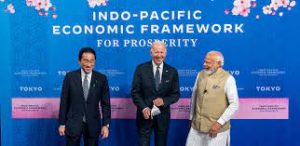
An Inter-Ministerial delegation from India led by the Department of Commerce participated in the second Indo-Pacific Economic Framework for Prosperity (IPEF) negotiating round in Bali, Indonesia from March 13-19, 2023.
- Indo-Pacific Economic Framework for Prosperity (IPEF) is an economic initiative launched by United States President Joe Biden on May 23, 2022.
- IPEF has fourteen member states: Australia, Brunei, Fiji, India, Indonesia, Japan, South Korea, Malaysia, New Zealand, Philippines, Singapore, Thailand, United States and Vietnam.
- During the Bali Round, discussions covered all four pillars of the IPEF: Trade (Pillar I); Supply Chains (Pillar II); Clean Economy (Pillar III); and Fair Economy (Taxation & Anticorruption) – (Pillar IV).
- India participated in the discussions related to Pillars II to IV.




